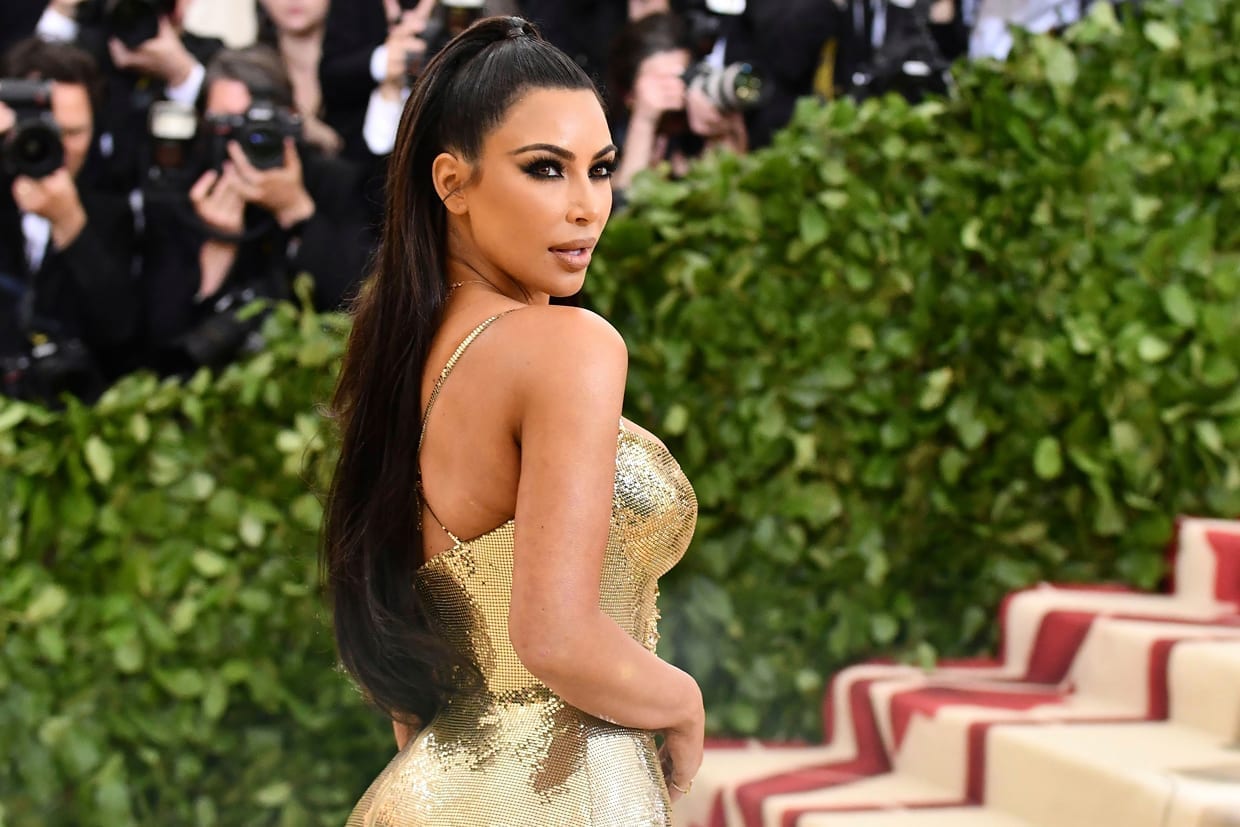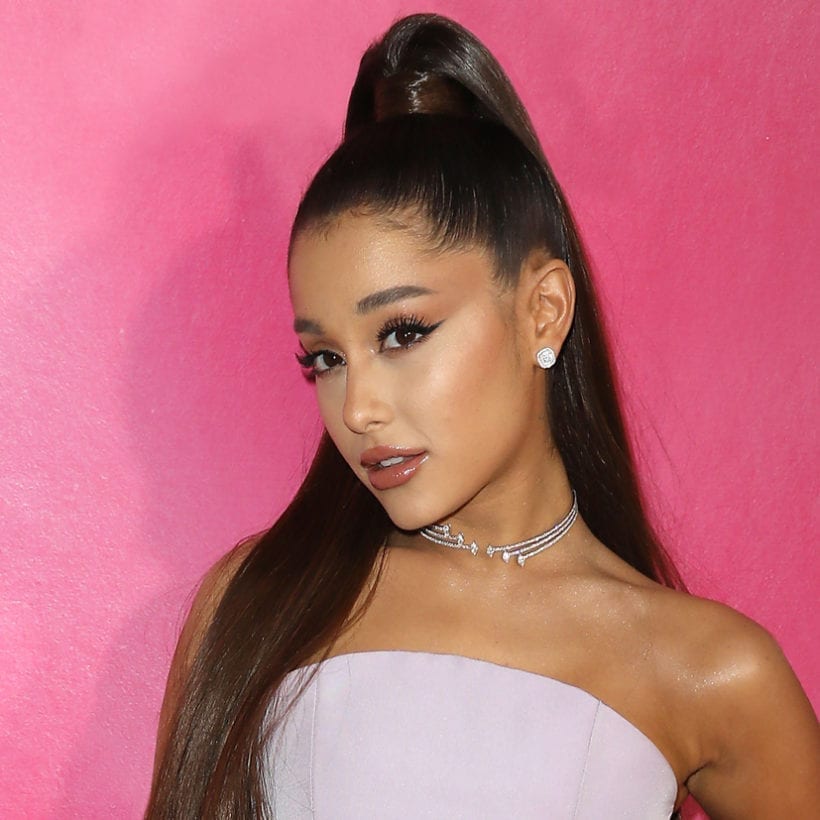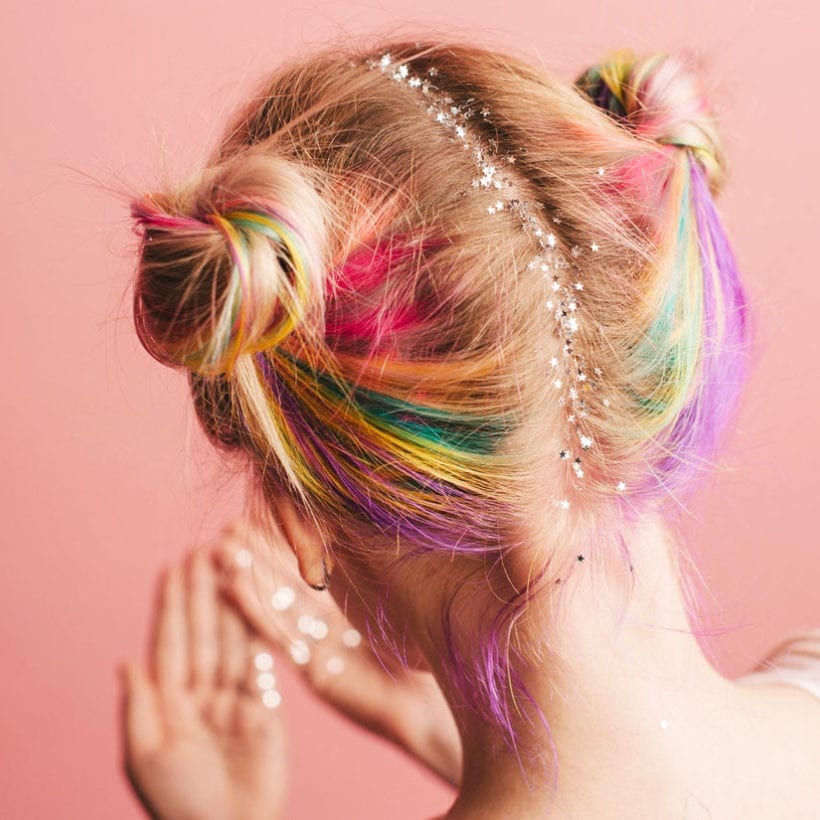Edgy haircuts can be a drastic change — sometimes too drastic. Has a short haircut ever left you daydreaming about long locks? Hair extensions might be the answer for you (or anyone who wants a non-permanent way to switch up their look).
Although hair extensions used to have a bad reputation, they have come a long way when it comes to hair health, quality and options. These days, there are a plethora of different styles of extensions and terms, that it can become as overwhelming as picking out a new car or serum.
“Every hair type can wear extensions; it’s just [about] finding the right extensions for you. I would say anyone dealing with alopecia or especially fine/thinning hair should be cautious. Also, very chemically processed hair should … choose their extension method carefully,” says celebrity hair stylist David Lopez.
Luckily, we are here to break down the different types of hair extensions for you. Throw your hair into a top knot and sit back, because we are about to dive scalp deep.
https://www.instagram.com/p/BxsVc-Nht3T/
Clip-in Hair Extensions: Best for all hair types
Clip-in extensions come in a strand of pieces attached at a base with silicone or fabric. They can be purchased online or in-store, come ready to use with the hair strands already attached and are probably the most manageable hair extensions to install yourself. All you have to do is clip the pieces into sectioned parts of your natural hair. (Each clip snaps open and closed easily and is hidden in between sections of your real hair.) They come in 100 percent human hair, as well as synthetic hair and cost anywhere from $150 to $600.
If you are looking for a temporary style of extensions, then opt for clip-ins because you can quickly and painlessly remove them and put them back for any occasion or day. “Clip-ins shouldn’t be worn more than 12 to 24 hours,” says Lopez. They are also the least damaging (if you don’t pull on them or leave them on too long) because they don’t involve heat, pressure or chemicals. Even if you have curly hair, it’s not a problem. Bebonia hair extensions come in four curl patterns.
How to take care of them:
Human hair clip-in extensions are extremely low maintenance, so lazy girls rejoice!
They only need to be cleansed and conditioned every 10-15 wears, or if there is an excess of product buildup after a long night out. “The extensions have been processed a lot prior to you wearing them so a gentle, sulfate-free shampoo will be best,” says Lopez. The sulfate-free shampoo will keep the hair from becoming dry and dull. “I really like Kenra Platinum’s Restorative Shampoo and Conditioner for extensions,” he adds.
After washing them in the sink, comb through the tangles with a wide-tooth comb to smooth them out then style the hair as you would your own. And since clip-ins are made from human hair, they can be blow-dried like your own.
https://www.instagram.com/p/BwnzTmcn-dR/
Tape-In Hair Extensions: Best for those recovering from severe color breakage or with thin hair
The half-temporary, half permanent option are tape-in extensions. If thick, voluminous and bouncing hair is what you are after, then these are for you — these extensions lie flat against your scalp, allowing for a more natural, effortless look.
The installment and removal process is simple and can cost anywhere from $200 to $800 on average. These extensions are pre-taped to wefts, then taped and glued on either side of your strands. Usually, the hairdresser would align them with the roots and apply them with a heated tool that heats the glue. And don’t forget — you need to have them removed with a glue remover at a salon. It is best not to try this at home.
How to take care of them:
According to Lopez, tape-ins can stay on from 4-6 weeks depending on hair type. With tape-in extensions, it is essential to be very particular when choosing products because the wrong ones can cause the tape to loosen or slip off. Natural hair growth can also override the tape-in wefts overtime. Combat this by visiting your salon and asking them to move the extension, so they stay aligned with the growth of your hair.
It is suggested to brush and detangle the hair a few times a day with an extension brush and to wash once or twice a week. Sulfate-free products, shampoos and hair masks are the best for making sure these extensions last as long as possible.
https://www.instagram.com/p/Bw9qAHHh8e2/
Sew-In Hair Extensions/Weave: Best for textured hair
With some of the best weave extensions in the game, it is hard to tell where natural hair ends and begins. When appropriately installed, sew-in extensions can be perfect for growing out shorter styles, protecting the natural hair and trying a new method without the full commitment. They can range from $275 to $2,000.
Weave hair is applied by a needle and thread. The hair is then sewn directly onto cornrow braids. This style of extensions is best for those with thicker hair. The kind of braid pattern you choose depends on the style of weave you are after. Weave hair can be wavy, curly, loosely curled, tight curls and bone-straight depending on the kind you buy, making this the best extensions for those who enjoy a variety of styles and options.
How to take care of them:
Moisturize, moisturize, moisturize; it is of ample importance. Moisturize the scalp, nape and the edges of your hair by massaging with castor oil or coconut oil twice a week to avoid itchiness and irritations. And just because your natural hair is covered, that doesn’t mean it should be neglected. Almost as important as catering to your natural hair while wearing a sew-in weave, is finding a stylist and salon that specializes in caring for sew-ins properly. The best way to find sew-in stylists is through Yelp reviews!
https://www.instagram.com/p/BxvsenlFPWU/
Fusion & Pre-Bonded Hair Extensions: Best for those wanting longer, more permanent extensions
Fusion hair extensions, also known as bonding or pre-bonded extensions, are one of the most popular methods of extension attachments because of its trusted, natural and long-lasting results. Your natural hair is parted and attached piece-by-piece using glue or wax. Lopez says keratin bonds can typically last up to three months. And while they are the most expensive — costs range from $500 to $1,500 — they are the most natural-looking extensions, making it worth it for most. These extensions should be applied by a stylist.
How to take care of them:
As you wear these extensions, your hair will grow, and that growth will cause the bond to move further away from your scalp. It is essential to go in for touch-ups every few weeks for adjustments and re-applications. Use a soft bristle brush or nylon extension brush to detangle the hair without damaging it. As far as washing goes, cleanse from the top down while working the shampoo gently, then rinse and detangle gently so you do not release the bond. Maintenance appointments on these extensions are required every few months as they become looser when your natural hair grows underneath.
https://www.instagram.com/p/BuUeUeGhQds/
Micro Link Hair Extensions: Best for straight hair
Long-lock lovers unite — if you are looking to enhance your tresses and take a break from the usual installation methods, then opt for micro link hair extensions. Micro links are small beaded clamps or closures that attach the extensions to your own hair. Each piece is small and applied strand by strand with an application tool and must be done by a professional — the price ranges from $150 to $300. The extensions lay flat against your head and make you feel as though your hair grew naturally overnight.
How to take care of them:
During routine maintenance appointments, links are opened, brushed out and then re-attached to new, clean sections of hair. These extensions can be washed as often as you wish. Thoroughly massage sulfate, paraben and oil-free shampoo in between the attachments followed by a cooling rinse. Use moisturizing sprays and light oils on the ends to keep hair looking shiny and natural.
https://www.instagram.com/p/BwQc3FJAVUK/
Wigs & Hair Pieces: Best for all hair types, no-fuss women
Not only are there are many ways to style a wig (do a quick YouTube search, and you will see), but there are also many different kinds of wigs: frontals, full lace wigs, synthetic units — the options are endless, ladies. Here are the brief differences below:
A frontal wig: covers the entire hairline and goes from ear to ear to look the most natural.
Full lace wig: are constructed from a lace cap that covers the entire head, and the 100 percent human hair is knotted in by hand.
Synthetic unit: uses a number of the foremost technologically advanced hair fibers and requires no styling as the hair stays in place.
Wigs are incredibly versatile and ultra-convenient for hair change-ups and trend lovers. They are also great for those that don’t want to damage their natural hair with heat tools, pulling, pressure and dyes. An excellent, well-made wig made of human hair can cost you back anywhere between $500 upwards to $5,000, depending on the type of hair being used in the process.
How to take care of them:
Take them off every night. If your wig is sewn into your hairline, wear a silk scarf or bonnet or sleep on a silk pillowcase to protect the hair at night. Make sure you wash your wigs with a sulfate-free shampoo and conditioner. If you are wearing your wig daily, washing it twice a month will suffice, but if you only wear it for certain occasions, washing it once a month will do.
Editors note: Try not to use heat on synthetic wigs! Synthetic hair is made of a type of plastic, and applying heat with a curling iron, flat iron or blow dryer will burn, singe, and can even melt the hair!
We only recommend products we have independently researched, tested, and loved. If you purchase a product found through our links, Sunday Edit may earn an affiliate commission.







